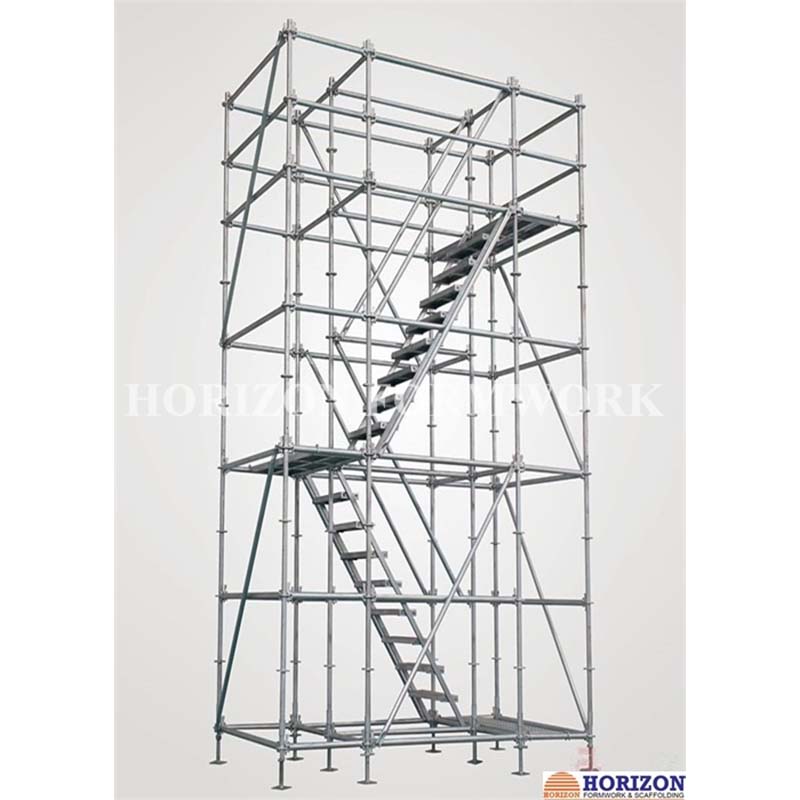Do you need scaffolding for your project? Are you confused about the different types of scaffolding available? Read our guide where we discuss the different types of scaffolding in construction and the benefits of each of them.
Ringlock Scaffolding System
Scaffolding is a temporary structure used to support workers and materials to provide a safe working platform for construction, maintenance and repair of buildings, bridges, and all other man-made structures. Scaffolds are widely used on-site to get access to heights and areas that would be otherwise hard to get to. Unsafe scaffolding has the potential to result in death or serious injury so needs to be built correctly and safely. Scaffolding is also used in various other forms for formwork, supporting structures, events and so on. There are a number of different types of scaffolding options to choose from, choosing the right one can make your project much safer and easier which is why it is so important.
The different types of scaffolding

There are five main types of scaffolding used today. These are Tube and Fitting, typically traditional types of scaffolding seen in the UK (fitting), prefabricated modular system scaffold such as Layher, Lightweight prefabricated aluminium systems such as towers and podiums and bamboo scaffolds (typically found in the Far East).
Independent scaffolding
There are various forms of traditional tube and fittings scaffolds but those used are generally referred to as Independent Scaffolds, these are typically built independent from the building or structure but generally rely upon being physically tied in some form. Free standing scaffolds can be built, although these would be subject to a design by a competent design engineer.
Putlog scaffolding
Traditionally, scaffolds for construction used to be built using poles bearing onto the supporting walls of the building, hence the name ‘Putlog’, putting the log into the wall. This can be seen on many mediaeval buildings where the pockets remain in the walls. This type of scaffolding method is not commonly used anymore due to various limiting factors.
Cantilever & suspended scaffolding
When using traditional tube and fitting scaffolds, many solutions can be provided to overcome access issues, such as cantilevers, bridges and suspended scaffolding that does not require the scaffolding to be built from the ground up. These types of scaffolding structures are often deemed complex structures and require an appropriate amount of planning, experience, and knowledge to execute properly, which is why enlisting in an expert company is vital. We make sure we provide thorough and reliable solutions at MR Scaffolding Services.
System scaffolding
The next most common type of scaffolding is referred to as System Scaffolding, there are numerous system manufacturers across the world, one of the most prominent manufacturers is Layher, who manufacture high quality, versatile systems. This system is made of modular components that interlock to form an extremely strong and user-friendly working platform.
Ensuring safe access
When considering your access requirements, a primary concern should be how the workforce access the different types of scaffolding structures, regardless of which product you choose. The requirement of the hierarchy of control regarding access should always initially consider fixed installation over ladders, these solutions come in the form of system staircases which provide a safe solution to the workers accessing their working areas. The use of staircases is also a consideration of the emergency arrangements procedures as required by the Construction (Design and Management) Regulations 2015.
The NASC Guidance document SG25:14 provides information relating the appropriate selection of access to the different types of scaffolding and is freely available to download from their website.
Alternatives to scaffolding
As well as the choice of all of the different types of scaffolding, there are also plenty of other options to choose from. Many other products are available on the market to provide temporary access to work at height. These include products such as Mobile Aluminum Towers, Zip-Up Podiums, Fold Away Platforms for easy transportation and so on. The emphasis on many of the products is proper training in the erecting and use of the products, which unless working in a domestic environment is a legal duty on the employer.

